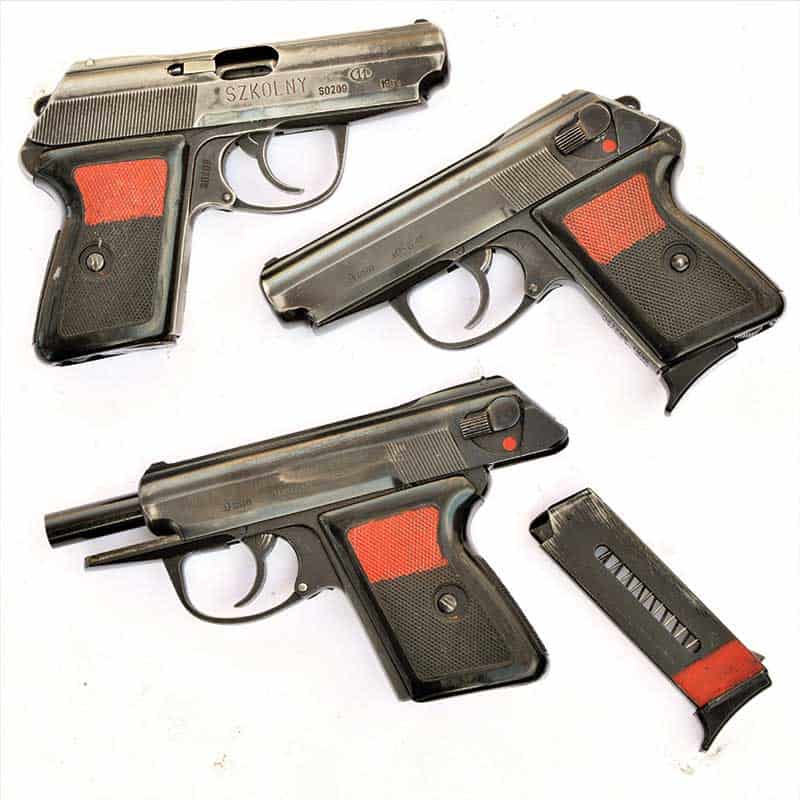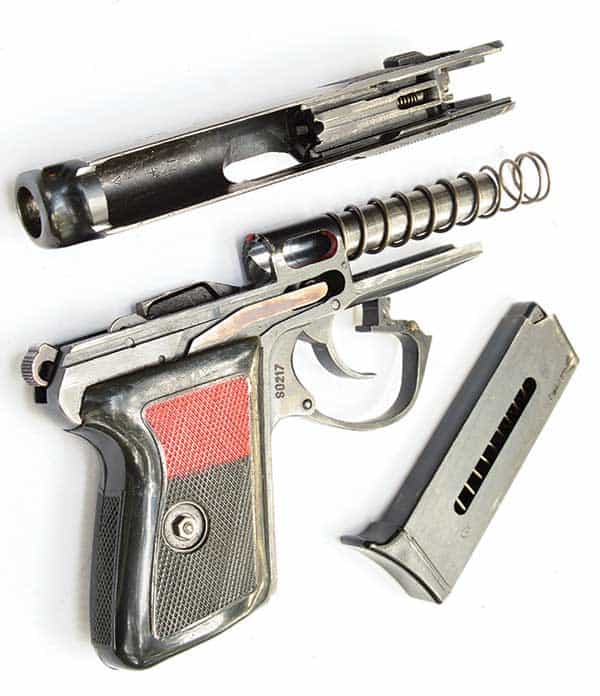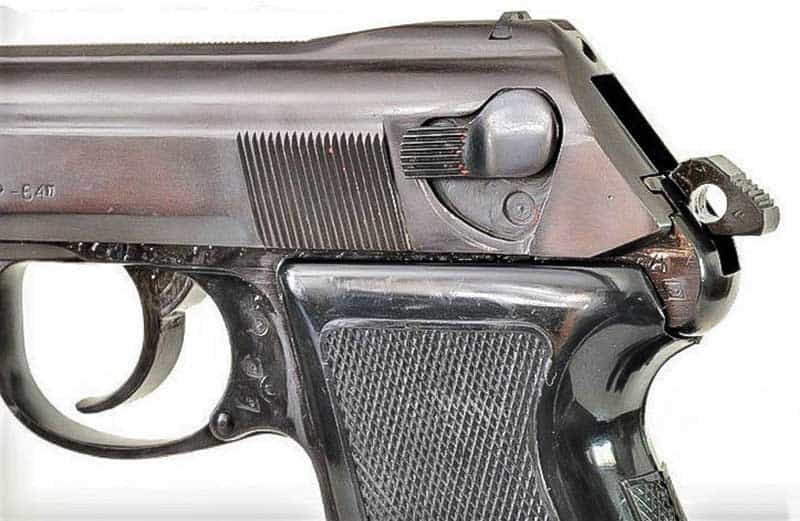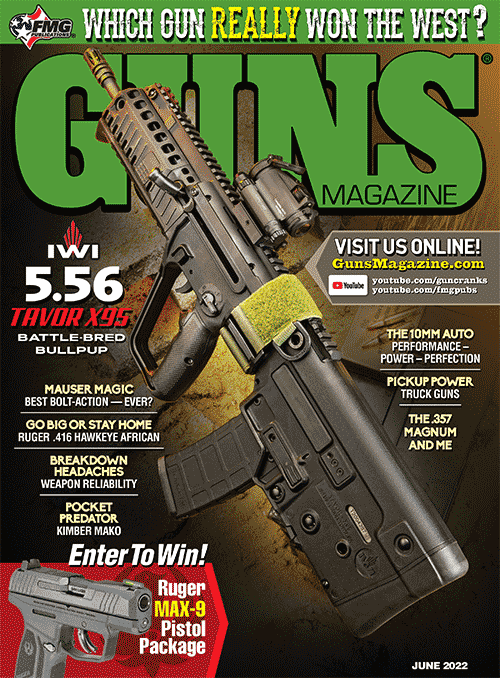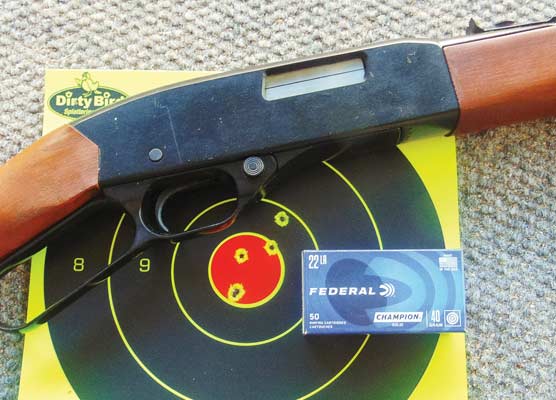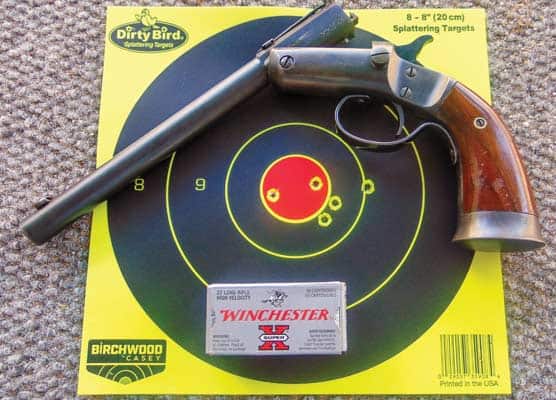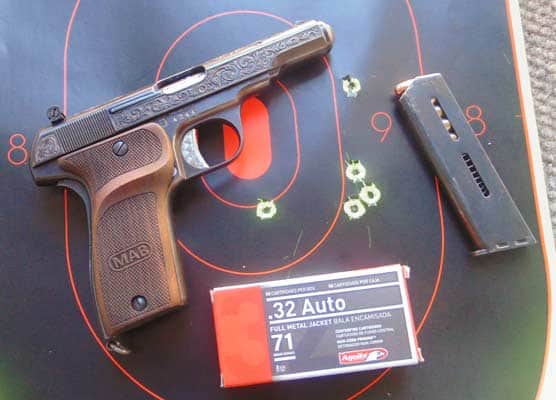Polish P-64 SZKOLNY Training Cutaway Pistol
A bargain military surplus treasure
Today, let’s consider the Polish P-64 pistol. It was designed in the 1950s and finally adopted in 1965, but such is the nature of government-managed economies in Communist countries.
The P-64 resembles a clunkier, hump-backed, Walther PPK and has similar features — fixed barrel, blowback action, double-action/single-action trigger, hammer drop safety and an identical field stripping procedure. As much as it resembled the PPK, I’ve often wondered why the Poles didn’t simply copy the PPK. For its few unique mechanical innovations and a somewhat lower production cost, the P-64 really offered no functional advantage over the Walther.
A Poor Substitute
Chambered in 9mm Makarov, the six-shot P-64 wasn’t even the combat pistol its predecessor, the 7.62x25mm Tokarev TT-33 (the Polish Tokarev), was. Factory 11 in Radom, Poland, took up production of the P-64 and it was issued to military, police and security forces nationwide. Though unspectacular in design and performance, the P-64 was at least home grown rather than a copy of a Soviet weapon.
Before the collapse of the Communist Bloc, American Cold War collectors had very limited access to “enemy” arms, accoutrements and uniforms. I saw a fellow pay over $200 for an East German army helmet in the late 1980s. It was a good price at the time. If he felt bad when, a few years later, the same helmets were selling at army surplus stores all across the country for less than $20, I don’t think he felt bad very long. How could you when a COMBLOC boom of military surplus was flowing out of the USSR and Eastern Europe at prices that, when adjusted for inflation, were reminiscent of the Golden Age of military arms collecting in the 1950s and 1960s.
The spigot has been essentially closed for a long time now, but we’re still enjoying a surplus of Commie surplus in the collector market helping to keep prices down — but mark my word, it won’t last.
Warnings of precipitous price rises aside, I’m happy to write a column about a military surplus gun deal you don’t need a time machine to take advantage of. Cold War vintage Polish SZKOLNY cutaway P-64 training pistols are currently available for less than $100. As variants go, training cutaways are generally extremely rare. At their current pricing, I see them as sleeper collectibles. In fact, I bought three.
These P-64 training cutaways were imported years ago by Century Arms International, along with crates of the standard 9mm Makarov pistols. As imports, they were marked in the usual legally required manner. Century seems to have been experimenting with a dot peen marking machine at the time, as they put their “C.A.I. GEORGIA. VT/Made in Poland” and the serial number in various locations. Recently, Centerfire Systems bought out all their remaining inventory and started selling the cutaways online. This is where I re-discovered them.
New Arrival
The condition of the training pistols varies from heavily used to nearly new. Some are the earliest style with round hammer spurs and some are 1970s versions with the so-called improved, triangular, hammer spur. All of them had the firing pin shortened and have no apparent firing pin hole opening to allow it to hit the cartridge primer if it was full length. The red paint on the grips and the top of the slide and unique marking readily differentiate the cutaway trainers from standard pistols.
On the right side of the slide, SZKOLNY (the Polish word for “school”) is deeply engraved. A closer examination through the ejection port reveals a neat, oblong hole, cut through the frame’s barrel hoop and the barrel chamber. This viewing port illustrates how the 9x18mm Makarov cartridge chambers and headspaces. I wonder how many accidental discharge injuries and deaths were averted by this simple visual aid demonstrating how an auto-loading pistol can still be loaded and ready to fire despite the removal of the magazine!
A look inside the chamber of a P-64 revealed it appears to offer surprisingly little support to the bottom of the 9x18mm cartridge case-head. The bottom rear of the chamber is carved away to extend the feed ramp deeply up into the chamber to ensure reliable feeding. Apparently it didn’t compromise the strength of this all-steel pistol in any significant way. It’s a demonstration of how far one can go with leaving a case-head unsupported and how big a role case construction plays in containing the forces of the rapidly expanding powder gases.
Still Aa Gun
Even though these guns cannot fire live ammunition in their present state, they must still be transferred through FFL dealers because they are considered firearms by the ATF. Technically, they could be made to fire even though the strength of the barrel-mounting hoop is seriously compromised by the removal of 90% of it along the ejection port side.
A person could still drive out the barrel retaining pin, replace the barrel, get a new firing pin, re-drill the firing pin hole, and make this a functional pistol … at least for a shot or two. This makes no sense from an economic or safety standpoint and no sane person would consider it, with the exception of movie prop houses.
For theatrical use as a semi-auto blank pistol, a simple unlocked, blow-back action like the P-64 is a good starting point and the low cost of the SZKOLNY makes it attractive for conversion to blanks only. A competent welder could repair them to handle blanks safely by welding up the remnant of the frame hoop to a new barrel or patching the old one and cleaning up the chamber. Blanks don’t produce nearly as much pressure as live ammunition and generally don’t expand to grip the chamber walls anyway, so a perfect chamber-reaming job is rarely needed for reliable extraction.
Overall, the P-64 SZKOLNY pistols are a solid value for a collector, instructor or prop-master. As a collector, I hope the instructors and prop-masters ruin a lot of them so mine will be worth more.

